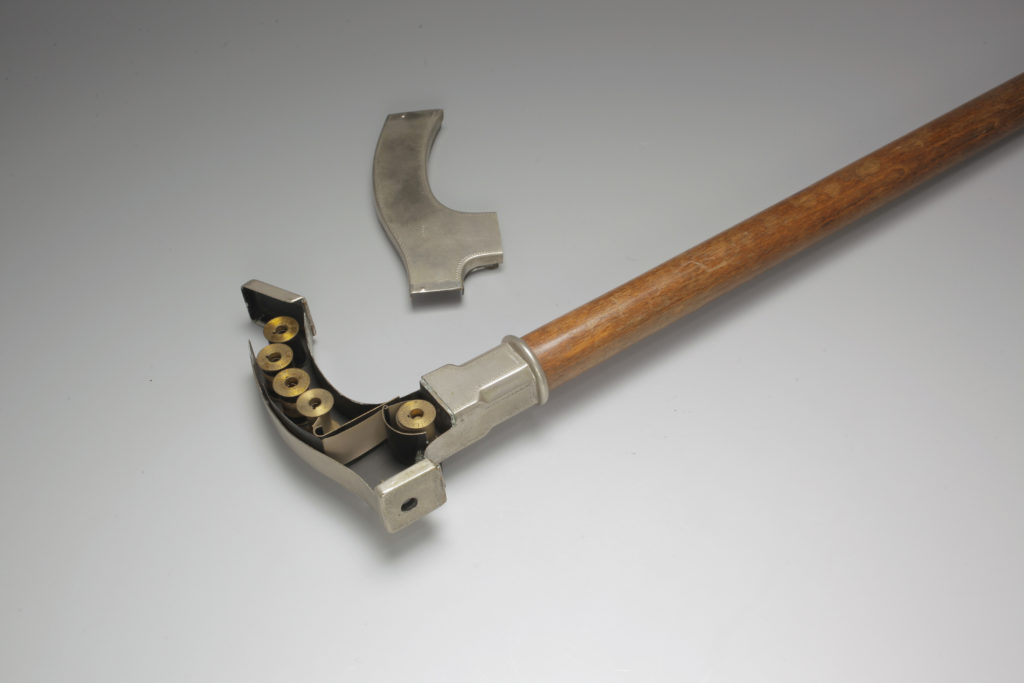Spy cameras
Made possible by the appearance of gelatino-bromide plates, spy cameras became very fashionable in the 1880s. Hidden within everyday objects, they made it possible to take photographs unnoticed. The emergence of film, which used a more flexible, more compact format, further stimulated the creativity of inventors.
The film reel was adapted to all kinds of everyday objects. Cameras were hidden within gentleman’s attire (inside a watch, a cane, a hat…) or in a handbag such as this one, which was once used by the Soviet Union’s intelligence service, the KGB.
Since it was important for discretion’s sake not to take obvious aim at the subject, the main problem in terms of taking photographs with those kinds of cameras was the framing of the shot, as seen in this adventure of famous reporter Tintin.


